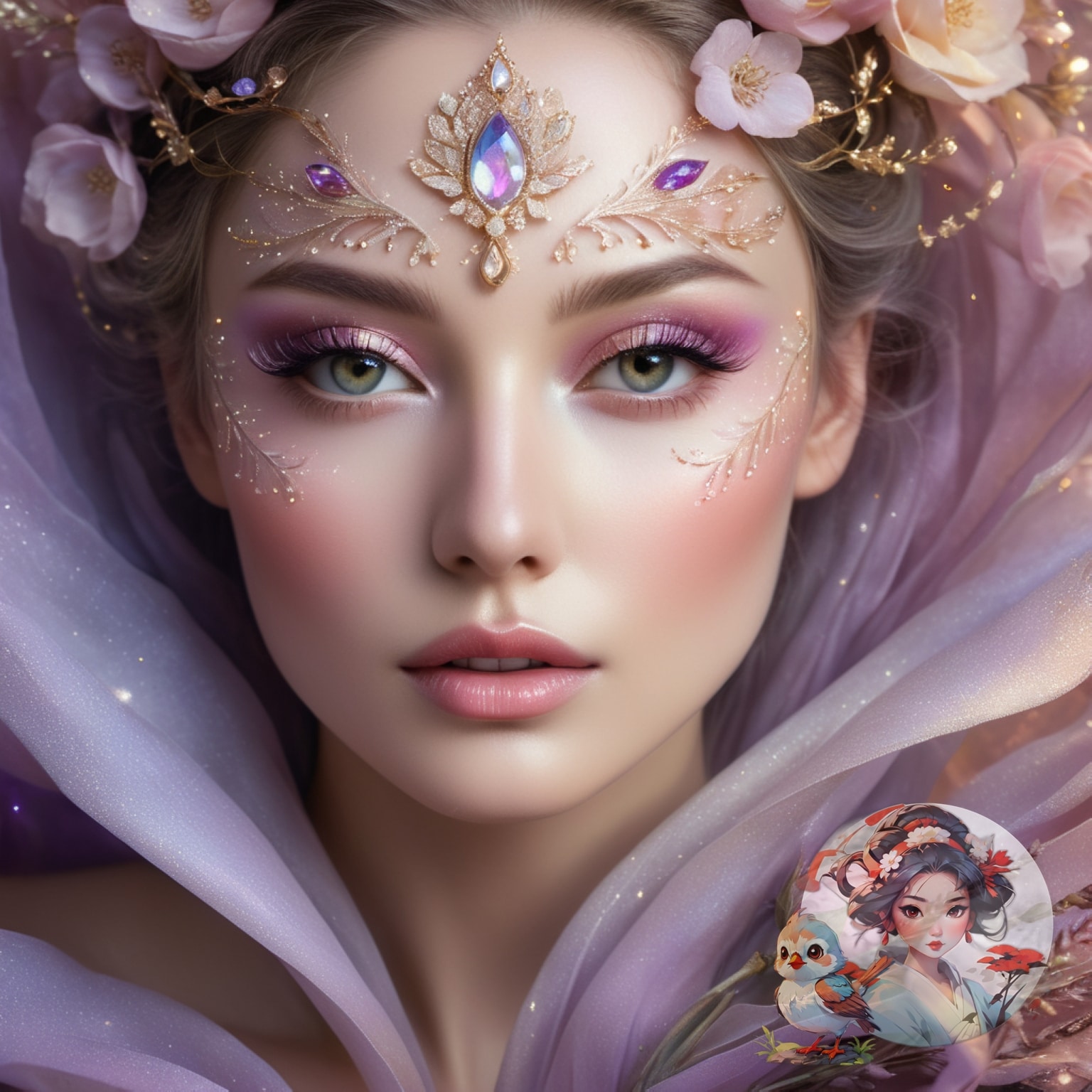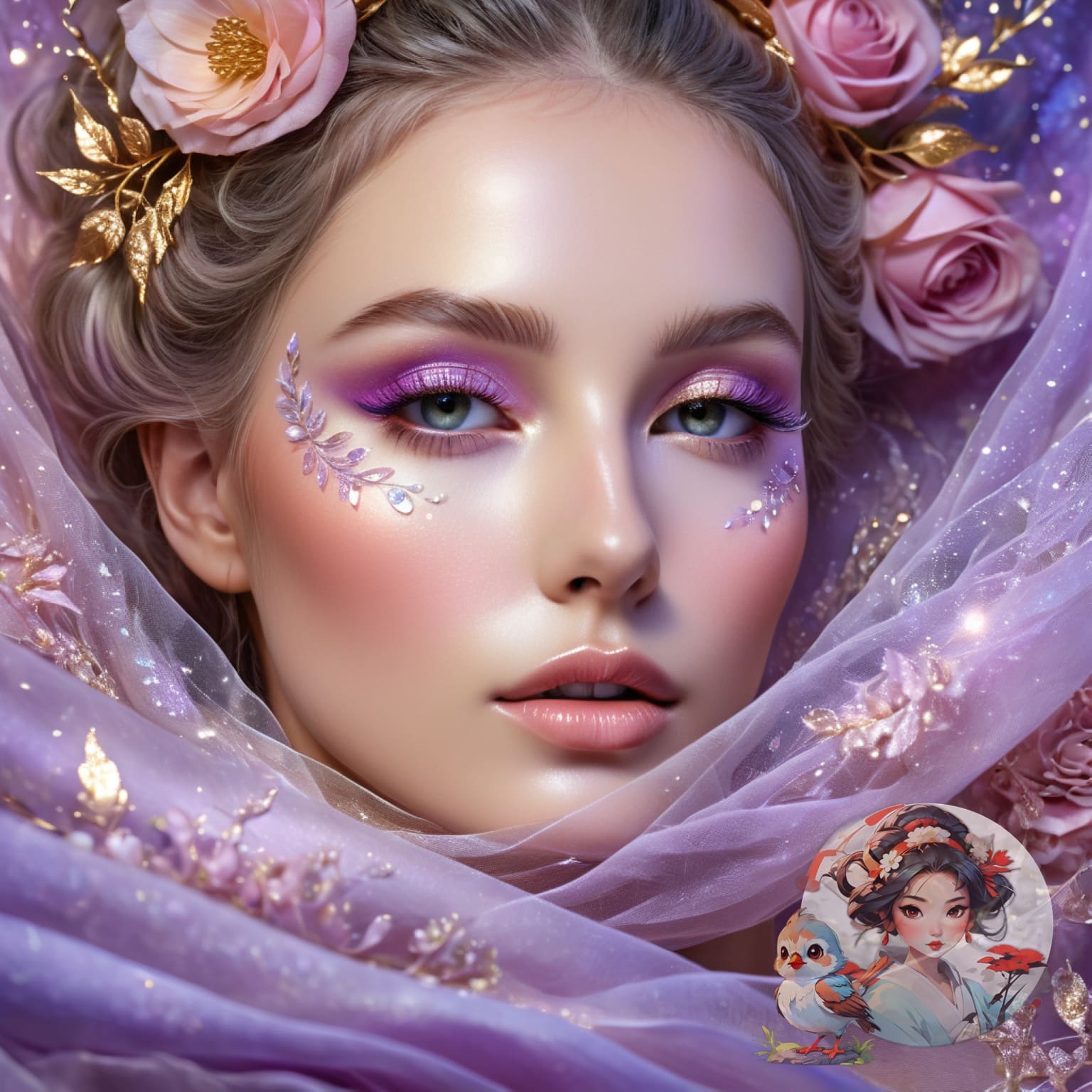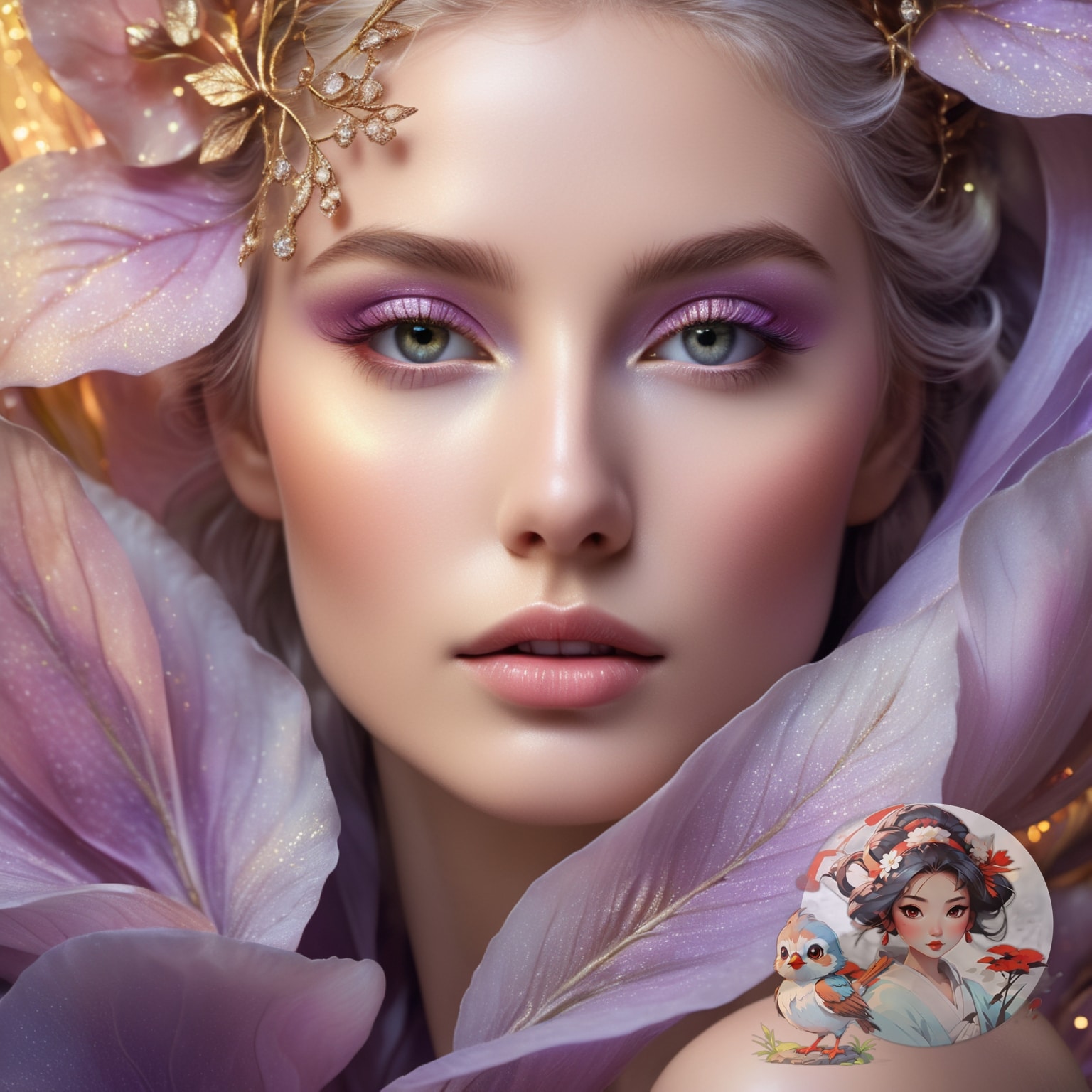The art of beauty. In Japan, we have a deep appreciation for the ephemeral nature of life, and this is reflected in our concept of wabi-sabi – finding beauty in imperfection and impermanence. Take the delicate cherry blossom, for example. Its brief yet vibrant existence is a poignant reminder to cherish each moment.
As a geisha, I’ve had the privilege of studying traditional Japanese beauty, which emphasises the importance of subtlety and restraint. We value the soft, gentle glow of skin achieved through meticulous care and attention to detail. Our beauty rituals are steeped in tradition, with each step – from cleansing the skin to styling the hair – imbued with a sense of reverence and respect.
I’m often asked about the secrets of Japanese beauty, as if there’s some hidden formula waiting to be discovered. But the truth is in the nuances. It’s the way a subtle scent can set a mood, or the soft rustle of silk against the skin. Beauty is not just about aesthetics; it’s an experience, a sensory journey that unfolds with each passing moment.
In my experience, beauty is not something that can be reduced to a set of standards or ideals. It’s a dynamic interplay of individuality and culture, with each person bringing their unique perspective to the table. So what is at the heart of this enigmatic concept? Perhaps it’s not something that can be captured in a single phrase or definition. Perhaps beauty is simply the accumulation of moments, each one a brushstroke on the canvas of our lives.
Table of Contents
ToggleThe art of beauty. It’s a delicate balance of impermanence and precision, much like the fleeting nature of cherry blossoms. As a geisha, I’ve spent years mastering the intricacies of traditional Japanese beauty, from the subtle nuances of oshiroi (face powdering) to the precise strokes of kojimai (Japanese eyebrow shaping).
Cultural perceptions of beauty are like the threads of a rich tapestry, woven together by social norms, historical context and geographical location. In Japan, for example, the concept of wabi-sabi (accepting imperfection) is deeply ingrained in our standards of beauty. We celebrate the subtle imperfections that make each face unique, rather than striving for an unattainable ideal.
But in today’s globalised world, I worry that we’re losing sight of this nuance. The homogenised standards of the beauty industry can be overwhelming, perpetuating a narrow definition of beauty that neglects individuality and cultural diversity. I see it in the faces of young geishas struggling to reconcile traditional techniques with modern expectations.
To regain our autonomy, we must redefine beauty on our own terms. For me, that means embracing the complexity of the human experience – the laugh lines, the whispers of grey, the uniqueness of each face. It’s a quiet revolution, one that celebrates our individuality rather than trying to conform to an unattainable ideal.
When I teach young geishas the art of traditional Japanese beauty, I emphasise the importance of self-acceptance. I show them how to bring out their natural beauty rather than trying to conform to someone else’s standards. It’s a lesson that goes far beyond the mirror, one that encourages them to celebrate their unique qualities and reject the pressures of consumerism.
Ultimately, beauty is a delicate balance of imperfection and precision. It’s a whispered promise, a subtle nuance that defies definition. And it’s up to us to reclaim it, one gentle stroke at a time.
Beauty experiences have a profound meaning that goes far beyond physical appearance. They encompass emotional, cognitive and social dimensions, making them a rich subject for research. When we encounter beauty, our emotions are stirred, evoking feelings of pleasure, surprise and even a sense of meaning.

In the traditional Japanese art of beauty, we recognise the importance of cognitive processing. Our minds draw on past experiences, cultural norms and personal values to evaluate and interpret beauty. This mental framework is shaped by our unique cultural heritage, which emphasises the importance of subtlety, restraint and nuance. The concept of wabi-sabi, for example, celebrates the beauty of imperfection and impermanence.
Experiences of beauty are also deeply social, often involving shared cultural norms and collective appreciation. In Japan, the traditional tea ceremony is a prime example. The ceremony is not just about the physical act of drinking tea, but about the art of creating a shared experience of beauty, harmony and tranquillity. By examining the interplay between cognitive, emotional and social factors, we can gain a deeper understanding of the multifaceted nature of beauty experiences.
In thinking about the psychology of beauty, I am reminded of the importance of an interdisciplinary approach. Insights from psychology, philosophy and aesthetics all contribute to a richer understanding of this complex subject. By embracing this holistic perspective, we can uncover the underlying mechanisms that drive our experiences of beauty and cultivate a deeper appreciation for the many ways in which beauty enriches our lives.
The intricacies of beauty have long fascinated scholars and philosophers, sparking debates that continue to this day. As someone well versed in traditional Japanese beauty care, I’ve come to realise that our understanding of beauty is often shrouded in abstraction. We rely on concepts that, while well-intentioned, fail to capture the nuances of human perception.
In my experience, the search for beauty is deeply intertwined with our collective search for meaning. It’s not just about aesthetics; it’s about exploring the human experience. To truly grasp the complexities of beauty, we must be willing to venture beyond the realm of theoretical frameworks and into the realm of the tangible. We must examine the intricacies of cultural interpretation and acknowledge the biases that influence our perceptions.

In traditional Japanese beauty, we emphasise the importance of subtlety and restraint. Beauty is not just about appearance, but about cultivating an inner radiance that shines through in every aspect of one’s being. This approach allows us to appreciate the beauty in imperfection, to find meaning in the impermanent. By embracing this perspective, we can begin to unravel the mysteries of beauty, revealing its multifaceted nature in all its glory.
Ultimately, our understanding of beauty must be based on evidence and observation rather than theoretical dogmatism. By adopting a more nuanced approach, one that balances intellectual rigour with a deep appreciation of the human experience, we can gain a profound understanding of the role of beauty in our lives. As we navigate the intricacies of beauty, we may discover that its true essence lies not in abstraction, but in the intricate web of meaning that underlies our very existence.
As I sit in contemplation, surrounded by the serene beauty of nature, I am reminded of the profound impact that the concept of beauty has had on human existence. Philosophers and scholars have grappled with its meaning for centuries, producing a rich tapestry of thought that continues to influence our understanding of this complex and multifaceted concept.
In my own tradition, Japanese culture has long revered the art of beauty, with an emphasis on subtlety and restraint. The intricate designs of our kimonos, the delicate nuances of our tea ceremonies and the carefully cultivated elegance of our gardens all testify to a deep appreciation of the beauty that can be found in simplicity. As a geisha, I spent years mastering the art of traditional Japanese beauty, learning the intricacies of skin care, hair styling and make-up application passed down through generations of women in my profession.
The philosophical debates surrounding beauty are equally fascinating, with thinkers such as Plato, Aristotle and Kant offering different views on the nature of beauty. While Plato believed that beauty was a transcendent, eternal concept, Aristotle saw it as a quality that could be found in the world around us. Kant, on the other hand, argued that beauty is a subjective experience, shaped by our individual perceptions and experiences. These different perspectives highlight the complex and multifaceted nature of beauty, and remind us that there is no one ‘right’ way to understand or appreciate it.
As I reflect on the many different cultural interpretations of beauty, I am struck by the diversity of values and norms that shape our understanding of this concept. From the bold, vibrant colours of African tribal art to the delicate, lace-like patterns of Islamic calligraphy, each culture has its own unique vision of what is beautiful. And yet, despite these differences, the search for beauty remains a constant, driving force in the human condition. Whether we seek to create it, experience it or simply appreciate it, beauty has the power to inspire, uplift and transform us in ways that few other things can.
I’m delighted to share with you the intricacies of beauty research, a field that has fascinated me for years. In the field of empirical aesthetics, researchers have made remarkable progress in understanding the complex relationships between cultural influences, personal experiences and aesthetic preferences.
Through rigorous methodology and statistical analysis, researchers have identified three key dimensions central to beauty experiences: intense pleasure, universality and meaningfulness. These findings are particularly interesting to me because they echo the principles of traditional Japanese beauty care. For example, the concept of “yutori” – finding deep joy in simple things – resonates with the idea of intense pleasure. Similarly, the emphasis on harmony and balance in traditional Japanese aesthetics resonates with the notion of universality.
What I find remarkable about these findings is that they highlight the intricate dance between individual experience and broader cultural influences. It’s a nuanced understanding that reflects the essence of Japanese beauty, which emphasises the importance of subtlety and restraint. As researchers continue to explore the complexities of beauty, I’m excited to see how their discoveries will shape our understanding of this multifaceted concept.
The art of understanding the universal qualities of beauty. It’s a subject that has fascinated researchers and scholars for centuries. In my years of studying traditional Japanese beauty, I’ve come to realise that there is a common thread that runs through different cultures and beauty standards.
Researchers have long debated the definition of beauty, from Plato and Aristotle to modern theories in psychology. I’ve found that ancient Greek philosophers’ concepts of beauty, such as the notion of the ‘golden ratio’, have parallels in traditional Japanese aesthetics. The quest to understand what defines beauty across cultures is ongoing.
Studies in empirical aesthetics have made significant progress in identifying the dimensions of beauty. Six key aspects have emerged: intense pleasure, universality, continuity of experience, exceeding expectations, harmony in variety, and meaningfulness. These dimensions hold great promise for elucidating the universal characteristics of beauty and freeing our understanding from culturally-bound beauty standards.

In traditional Japanese beauty, we place great emphasis on harmony and balance. The concept of yin and yang – the interplay of opposites – is central to our aesthetic. We strive to balance contrasting elements, such as light and dark, to create a sense of harmony. This concept is echoed in the dimension of “harmony in diversity”, which highlights the importance of balance in creating beauty.
As I reflect on the future of beauty research, I am reminded of the intricacies of the traditional Japanese concept of beauty, which emphasises the subtlety of imperfection. When exploring the universal characteristics of beauty, it’s important to consider the cultural context in which beauty standards are formed. The cultural implications of beauty standards can have a profound effect on individuals and society, influencing how we perceive and experience beauty.
To gain a deeper understanding of the perception of beauty, we need to look at the emotional resonance of beauty experiences. By examining how beauty evokes emotions, we can uncover the complexity of beauty’s impact on our well-being. For example, in traditional Japanese beauty care, the emphasis is on cultivating a sense of inner balance and harmony, which is reflected in the meticulous attention to detail in our beauty rituals.
An interdisciplinary approach, incorporating insights from psychology, philosophy and cultural studies, will allow us to develop a more nuanced understanding of beauty. By exploring the intersections between these fields, we can move away from traditional beauty standards and promote a more inclusive understanding of beauty. This, in turn, can empower individuals to redefine beauty on their own terms, embracing their unique qualities and characteristics.
In the realm of beauty research, cross-modal experiences also warrant further investigation. By examining how our senses interact and influence each other, we can gain a deeper understanding of the complexities of beauty. For example, in traditional Japanese beauty, the sense of smell plays a crucial role in evoking emotions and creating a sense of calm. By exploring these multi-sensory experiences, we can gain new insights into the nature of beauty and its impact on our lives.